




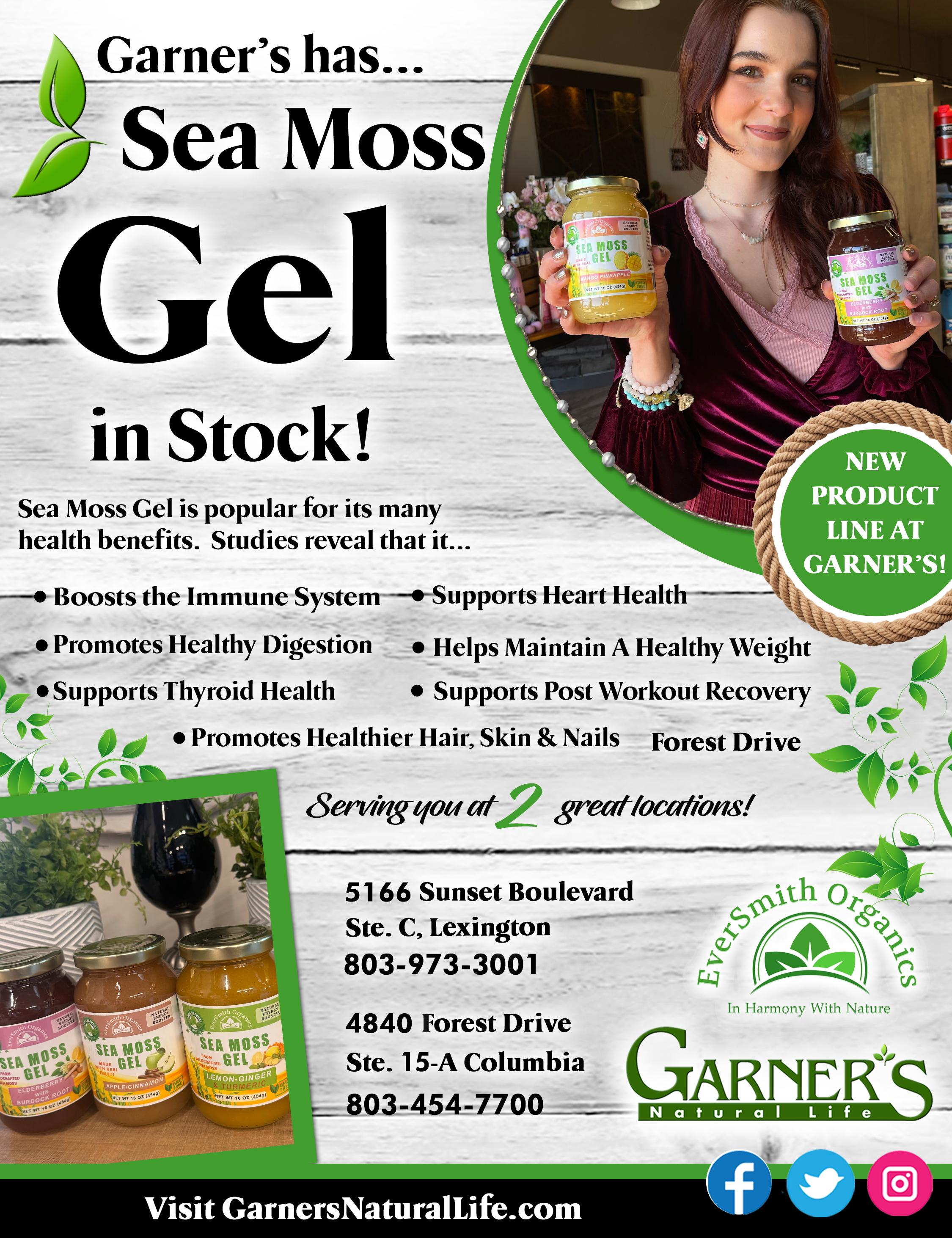


Publisher Annette Carter Briggs
Editor Sara Gurgen
Design & Production Kristina Parella
Billy Briggs
Contributing Writers Odell Williams
Sales & Marketing
Kristi Antley
Annette Carter Briggs
Website Kristina Parella
Billy Briggs
PO Box # 8371
Columbia, SC 29202
ColaPublisher@NaturalAwakenings.com
Annette Briggs Ph: 803-309-2101
Website ColumbiaNaturalAwakenings.com
Subscriptions are available by sending $24 (for 12 issues) to the above address.
CEO Kimberly B. Whittle
National Editor Sandra Yeyati
Editor Brooke Goode
Copy Editor/Proofing Melanie Rankin
Layout Flip180 Media
Natural Awakenings
Publishing Corporation
350 Main Street, Suite 9B
Bedminster, NJ 07921
Ph: 239-206-2000
NaturalAwakenings@KnoWEwell.com
Cover image by Dr. Jeffrey Gladden_CanvaPro

Natural Awakenings is printed on partially recycled and fully recyclable newsprint with black soy ink.
© 2024 by Natural Awakenings. All rights reserved. Although some parts of this publication may be reproduced and reprinted, we require that prior permission be obtained in writing.
Natural Awakenings is a free publication distributed locally and is supported by our advertisers. Please call to find a location near you or if you would like copies placed at your business. We do not necessarily endorse the views expressed in the articles and advertisements, nor are we responsible for the products and services advertised. Check with a healthcare professional regarding the appropriate use of any treatment.

Well … August has arrived, and I guess it’s about time to put the beach flip-flops and saved vacation brochures away and start focusing on such “fun” things as the school enrollment checklist for the kids, end-of-year deadlines and soon-tocome seasonal activities. It’s back to the ole grind!
This month is widely thought to signal a perceived shift and refocus on the pursuit of education and academic success, particularly with kids. Each year, back-to-school movements, triggered by school supply deals and tax-free shopping weekends, usually result in funny stories, evening news clips and YouTube videos, some very disturbing indeed. Although these can be funny and great discussion topics, the pursuit of an education is a serious matter. There are many critical components in the education process, but one of the most important ones is reading enrichment. Someone once said that reading a book can change a life and take an individual anywhere around the world with the “footsteps” of imagination. I believe this to be true.
I’m certain that most have an understanding of how critical reading is to a child’s cognitive and educational development process. Even so, I feel that as a nation we are drifting into a reading deficit crisis, clearly supported by national statistics, which paint a troubling picture of kids being seemingly swept away from the art and discipline of reading enrichment, often brought about by an overindulging, imbalanced and unsupervised usage of social media, video games, computers, smartphone technology and other devices. The lack of adult supervision and structured guidance has opened the “floodgate” to irresponsible and imbalanced use, and with it, a growing loss of appetite for reading. Not to be misunderstood, technological advancements are NOT inherently bad at all—only the improper and unwise use of them.

How important is reading? According to statistics, more than 70 percent of those incarcerated in America cannot read above a fourth-grade level. Sadly, more than 60 percent of all inmates are functionally illiterate. National statistics also indicate that one in four children in America will grow up without learning how to read, and students that don’t read proficiently by the third grade are four times more likely to drop out of school. In addition, 85 percent of the juveniles that face trial in the juvenile court system are functionally illiterate, suggesting that there is a potential relationship between illiteracy and crime.
For sure, there are other significant contributing factors negatively impacting the lives as defined by the statistics above; however, there does seem to be at least one common denominator that keeps emerging: the inability to read. I feel there is an urgent need for parents everywhere to start cultivating a much more proactive and positive “presence” in the lives of their children when it comes to reading enrichment. Start with reading a book together with the kids, followed by an engaging and thoughtful discussion. Also, and very important, consider setting new rules and guidelines outlining the proper use of technology. Creating a presence enriched with reading is vital. As one popular author once observed, “He that loves reading has everything within his reach.” Continue your own education as well … read on!
With a love for reading,

Annette Carter Briggs, Publisher
ColumbiaNaturalAwakenings.com







The Drains Aren’t Dumps program is an eco-impacting initiative designed to help protect local waterways. Hosted in partnership with the city of Columbia, Columbia Water and Richland County, the program challenges local residents to volunteer and strategically mark drains in designated areas. Instructions and materials will be provided. The goal is to reduce pollution entering local waterways, including creeks, streams, lakes and rivers. These stormwater pollutants negatively affect drinkable water quality, fish and animals.
Storm drain markers serve as visual reminders to city and county residents that storm drains lead directly to local waterways. The city of Columbia and Richland County use weatherproof medallions with the image of a fish and water, along with No Dumping/Drains to River stamped in large letters to mark areas. Properly disposing of pet waste, keeping yards free of trash, recycling motor oil, and reducing pesticide and fertilizer use are a few actions local residents can take to help keep waterways clean.
For more information, visit DrainsArentDumps.org.


Keep the Midlands Beautiful (KMB) is hosting its Lakeside Litter Sweep event on Saturday, September 14, around areas of Lake Murray. Local Midlands area residents are welcome to join more than 20 event partners and approximately 250 volunteers coming together to clean up Lake Murray’s shorelines, islands and water while having a great time. Volunteers can choose to stay onshore, utilize their own boats, or sign up for a free pontoon boat ride to the islands designated to be cleaned. Preregistration is required.
For more information or to register, call 803-733-1139 or visit KeepTheMidlandsBeautiful.org.

On Saturday, August 17, Keep the Midlands Beautiful (KMB), in partnership with the S.C. Department of Transportation, is hosting an AdoptA-Highway (AAH) campaign in the Midlands area. Individuals, organizations and businesses are encouraged to participate. The AAH program is sponsored by the S.C. Department of Transportation and coordinated by KMB for roads in Richland and Lexington counties. KMB also coordinates the Adopt-A-Street program for the city of Columbia.
Through these important sustainable partnering programs, caring citizens can take part in preserving and maintaining streets throughout the Midlands, which cultivates great benefits, such as tourism advancement, scenic beautification, improved quality of life, and raised educational and environmental awareness.
For more information and details about this Adopt-A-Highway campaign, including the location, call 803-733-1139 or visit KeepTheMidlandsBeautiful.org.


























































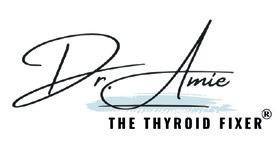


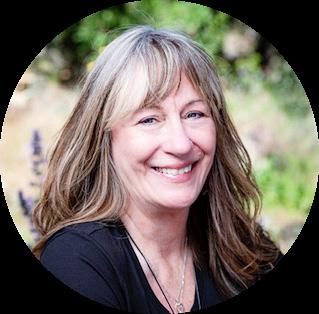
Did you know that you can stop bad habits and negative thoughts while significantly reducing stress and anxiety with the revolutionary 9D Breathwork & Sound Healing Technology? In a single session, somatic breathwork has helped countless people repattern limiting beliefs, root out deep traumas and release pent-up emotions, such as stress and anxiety. 9 dimensions of sound healing utilizes high-quality headsets coupled with somatic breathwork. The subconscious is gently activated to release years of mental and emotional blockers—to be replaced by new empowering paradigms that promote positive life changes.
Each session journeys into the deepest levels of the subconscious. 9D Breathwork group sessions can be hosted and experienced on Zoom, right in the privacy and comfort of your home, or in person such as at a retreat or at Grace Mosgeller’s location. The sessions are 90 minutes to 2 hours of uninterrupted time. Attendees lie down, put on a high-quality headset, cover their eyes and follow along to guided coaching that directs breathing and guides thought processing.
Mosgeller is a highly qualified 9D Breathwork facilitator and a spiritual healing transformation specialist. “I fell in love with 9D Breathwork journeys because it’s the quickest, gentlest and most Cadillac way to ‘get over your stuff and move on.’ In nearly 30 years of transformation coaching and energy healing, I can’t recall anything as effective as 9D Breathwork,” she says. “This healing technology is truly in a class of its own. The end result can bring you the freedom to be happy, satisfied, fulfilled and empowered to live life abundantly and at your full potential.”
To contact or learn more about Mosgeller and 9D Breathwork, email Grace@GraceMosgeller. com or download a couple of five-minute journey samples at GraceMosgeller.com/9DBreathwork. See ad, page 14.
The annual Springdale 5K will be held on Saturday, September 7, at the National Steeplechase Museum, located at 200 Knights Hill Road, in Camden. Kicking off at 8 a.m., the event is organized to support the hunger and homeless programs of the United Way. The U.S. Track and Field-certified course welcomes runners and walkers of all levels with two and four legs. Those that register before September 1 will receive $5 off of registration—use the code EARLY when registering online.

The race proceeds will go to benefit the Mobile Nutrition Center (MNC), a mobile food pantry that delivers healthy foods to sites located in rural Kershaw county. Through community partnerships, MNC delivers farm-fresh, store-bought and rescued food and grocery products, such as vegetables, meats, whole pastas and rice, and baked goods to those in need. Strollers and leashed dogs are welcome. There will be an awards ceremony following the event.
For more information and to register, call 803-432-0951 or visit RunSignUp.com/race/sc/ camden/springdale5k.

Time to shred! Keep the Midlands Beautiful (KMB) is partnering with the town of Irmo, Lexington County and Richland County to host a paper-shredding event for residents of Lexington and Richland counties on Saturday, August 10, from 9 a.m. to noon, at Irmo Community Park, located at 7505 Eastview Drive. Each household is limited to five boxes or bags of paper, and proof of residence is required. As a note, materials from businesses are not accepted.
For more information, call 803-733-1139 or email Traude Sander at TSander@kmbsc.org. Also visit kmbsc.org.

It’s all about bees on Saturday, August 17! The importance of the honey bee cannot be overstated. The primary goals of National Honey Bee Day are to promote and advance beekeeping, educate the public about honey bees and beekeeping, and make the public aware of the environmental concerns that impact honey bees. National Honey Bee Day honors the insect responsible for more than one-third of the food humans eat and those that work to protect them, such as beekeepers, beekeeping clubs and associations, honey bee enthusiasts, and pollinator habitat protectors. Bee associations, individuals and other groups are encouraged to get involved. The program is free and open to all.
For more information, visit Pollinators.psu. edu/news/happy-national-honey-bee-day.

On Sunday, August 4, from 10 a.m. to noon, the Irmo Chapin Recreation Commission (ICRC) is hosting a guided paddle tour of the lower Saluda River. Participants will learn about the natural history of the local area and will get the chance to explore one of two island destinations, ride the rapids, learn about the Lake Murray Dam, swim, observe local wildlife and much more. For explorers ages 5 and up, this is a great opportunity to explore the Midlands’ local waterways. Event gear and return shuttle service is included; however, attendees are asked to bring water shoes.
Cost: See website for details. Location: Saluda Shoals Park, 5605 Bush River Rd., Columbia. For more information, contact Justin Johnson at 803-213-2054 or WJohnson@icrc.net. Also visit icrc.net/event/guided-paddle-tripsaluda-river-5.



On Saturday, August 3, from 7 to 11 a.m., the Irmo Chapin Recreation Commission (ICRC) is hosting an indoor garage sale at Seven Oaks Park, located at 200 Leisure Lane, in Columbia. Residents throughout the Midlands are encouraged to clean out the garage, attic, kids’ rooms and closets, and bring those hidden treasures to sell. Make sure to drop by and check out all of the great bargains. This event is open to all ages.
Cost: Free to enter. For more information, call 803-772-3336 or visit icrc.net/event/ indoor-yard-sale-1.


On Thursday, August 1, from 9 to 11 a.m., EdVenture Children’s Museum, located at 211 Gervais Street, in Columbia, is hosting its Sensory and Accessibility morning event (The Pigeon) for museum guests that are neurodiverse or have other disabilities. A certified American sign language interpreter, sponsored by Colonial Life and provided by the South Carolina School for the Deaf and Blind, will be available throughout the morning for patrons. Sensory-friendly activities will include a sensory-friendly environment, reduced lighting, limited crowd size, sensory-friendly educational programming and resources for parents. Accessibility morning shows are free but space is limited.
Due to renovation and ongoing road work, guests using the parking deck will not be able to enter the museum using the side atrium entrance. Guests will need to walk around to the front of the building and use the main entrance if they use spaces in the parking deck. Accessible parking is available along the drive-in front of the museum’s main entrance on a first-come, first-served basis.
For guests in need of accessible parking, it is recommended to enter from Huger Street onto Washington Street, and then make a left at the end of Washington Street to access parking spaces located in front of the museum.
Cost: Admission is free with registration. For more information or to register, call 803-779-3100 or visit scMuseum.org/events/accessibility-morning-pigeon.
On Friday, August 16, from 5:30 to 7 p.m., EdVenture Children’s Museum, located at 211 Gervais Street, in Columbia, is hosting its sensory-friendly event for children with sensory processing issues. The evening’s activities will include reduced lighting, smaller crowd sizes, customized educational programing and helpful resources for parents. The museum’s special guests will have the opportunity to explore the museum in an aesthetically safe and accepting environment.
For more information, call 803-779-3100 or visit EdVenture.org.


The National Qigong Association is proud to highlight the distinctive advantages of qigong, a gentle, flowing exercise suitable for individuals of all ages and fitness levels, including those with physical limitations. Often referred to as moving meditation, these softer movements are incredibly effective for health and well-being.
Unlike typical exercises involving heavy, rapid breathing, qigong incorporates deep, slow breathing techniques that enhance oxygen intake, massage internal organs and reduce stress. These exercises help to promote energy flow, boost immune function, improve organ health and support overall well-being. Qigong is ideal for improving flexibility and balance while fostering inner peace. As an accessible fitness option, it provides a gentle yet powerful way to enhance both physical and mental health.
Newcomers, beginners and experienced practitioners alike are invited to the National Qigong Association’s annual conference, taking place from Tuesday, September 24, through Thursday, September 26, in beautiful Savannah, Georgia. The conference offers an excellent opportunity for attendees to delve into this ancient practice and will provide valuable insights into the transformative benefits of qigong.
Cost: See website for details. Location: 660 E. Broughton St., Savannah, GA. For more information or to register, contact Lauren Thomas at 888-815-1893, email Info@nqa.org or visit nqa.org/annual-conference.
Talc is used in many forms of makeup, including bronzer, blush, eyeshadow, foundation, mascara, lipstick and dry shampoo, because it absorbs moisture and prevents caking. But when it is mined, talc may be contaminated by naturally occurring asbestos, which is not evenly distributed, making testing for it difficult.
British women have sued leading cosmetic companies in U.S. courts, claiming they contracted mesothelioma, an incurable cancer of the lining of the lung, heart or stomach, through their use of cosmetic products. Unless related to employment, it is difficult to bring legal action for mesothelioma in the UK, and many of the large cosmetic companies are based in America. These women are seeking compensation and to raise awareness of the risks.
Johnson and Johnson (J&J) faces nearly 54,000 lawsuits related to claims that talc in baby powder caused ovarian cancer. A Reuters investigation found that J&J executives knew for decades that talc can contain asbestos.

Researchers from Ohio State University (OSU) have provided another reason to choose a more natural, plant-based diet: lowering the risk of colorectal cancer. Twenty percent of colorectal patients are under age 55, and the rate is increasing, according to the American Cancer Society. OSU scientists believe that the Western diet upsets the balance of gut bacteria, which, in turn, causes inflammation and accelerated cell aging, making individuals more susceptible to cancer. The researchers found that colorectal cancer patients were biologically 15 years older than their chronological age.
A study in the journal Nutrients characterized a Western diet as “high intakes of pre-packaged foods, refined grains, red meat, processed meat, high-sugar drinks, candy, sweets, fried foods,
Dermatitis affects 95 percent of patients undergoing radiation therapy. According to a review published in Drugs in Context, the symptoms of radiation-induced dermatitis include pain, ulceration, swelling, itching, burning and physical and psychological discomfort. In some cases, opportunistic infections may also arise. While initial treatments involve moisturizers, dressings and antihistamines, more severe cases are treated with topical corticosteroids and antibiotics.
Seventy breast cancer patients undergoing radiation treatment participated in a 2024 randomized, double-blind study published in Contemporary Clinical Trials Communications to test the effectiveness of Alantel, a topical body cream that contains concentrated levels of aloe vera, chamomile and thyme. Half the group applied Alantel during the four-week trial, and the control group applied a standard moisturizing emollient cream that contained beeswax. The Alantel group had significantly lower incidence of lesions and a significantly lower duration of dermatitis than the control group.

conventionally raised animal products, high-fat dairy products and high-fructose products.”

Makers of laundry detergent sheets tout their products’ eco-benefits, including their compact size; a reduction in detergent waste caused by drips, spills and overfilling; and their efficient, plastic-free packaging. The sheets contain polyvinyl alcohol (PVA), an ingredient that is also present in dish-detergent pods, which the U.S. Environmental Protection Agency has deemed safe for humans and the environment due to the fact that it biodegrades into water and carbon dioxide when exposed to certain microbes.
Unfortunately, PVA biodegradation conditions are not always present in municipal wastewater treatment plants. A 2021 study published in the International Journal of Environmental Research and Public Health estimates that approximately 75 percent of PVAs end up in the environment through sludge or water released from treatment plants. Because the majority of PVAs are made from fossil fuels, they add to global microplastic pollution.
Kew Gardens, in London, England, maintains a fungarium that displays about half of all known species—the largest collection in the world. Mycologists there are studying how fungi help soil sequester about 1.5 trillion tons of organic carbon around the world. Approximately 90 percent of plant species have a symbiotic relationship with fungi species, by which the fungi trade water and nutrients for carbon. Understanding this relationship will help in the design of reforestation schemes to sequester more carbon. Scientists have also noted that nitrogen pollution from burning fossil fuels and from agriculture reduces the diversity of fungi in the soil, thereby reducing the potential for carbon sequestration—pointing to one more reason to find ways to reduce the use of fossil fuels.

Mycelium, the soft, dense and strong roots of fungi, are being used in mycotextiles, a potential replacement for leather. MycoWorks, a South Carolina-based biotechnology company, is working on a scalable approach to grow uniform sheets of interwoven mycelium that are customizable for varying thickness, surface features and dimensions. The goal is to produce a more ethical, environmentally sustainable and efficient alternative to animal leather. The fungus is grown in sterilized agricultural waste such as sawdust and bran, and the growth process ends when the sheets of mycelium are peeled off the sawdust block, at which point they can be tanned and crafted into a range of marketable products. To date, MycoWorks materials have been used in designer handbags for Hermès, making them biodegradable at the end of their life cycle.

by Maya Whitman

The average life expectancy is 77.5 years in the United States, but residents of the Seventh-Day Adventist city, Loma Linda, California, are outliving the rest of the country by 10 years. Like other regions of the world classified as Blue Zones, Loma Linda’s soil and water aren’t sprinkled with magic, but daily lifestyle and dietary habits might be key contributing factors.
Coined by National Geographic explorer and researcher Dan Buettner, the term “Blue Zones” is bestowed upon intriguing corners of the world where people reach their ninth decade and beyond without suffering from chronic illness and disease. While no definitive formula for longevity exists in Loma Linda or any of the other four Blue Zones— Nuoro Province, Sardinia, Italy; Nicoya Peninsula, Costa Rica; Okinawa, Japan;
and Ikaria, Greece—commonalities include staying physically active, eating unprocessed food and enjoying a vibrant social network.
“By prioritizing physical activity, encouraging plant-based diets and creating spaces that promote social interactions, communities can reduce the incidence of chronic diseases and improve overall well-being,” says Buettner, author of The Blue Zones Kitchen, who found his life’s work traveling the world in search of centenarian secrets.
In 2023, JAMA Internal Medicine published the findings of a long-term study involving more than 75,000 women and 44,000 men over 36 years, which determined that adherence to one of four plant-based and Mediterranean dietary patterns can lower the risk of premature death. All of the dietary
guidelines in this study included whole grains, fruits, vegetables, nuts and legumes. Growing evidence suggests that nutrient-dense, unprocessed meals play a major role in reducing inflammation and oxidative stress, which can contribute to cardiovascular disease, cancer and diabetes.
“Diets in Blue Zones are predominantly plant-based, with a heavy emphasis on vegetables, fruits, legumes and whole grains. They also eat a variety of beans, which are a staple in their diets and an excellent source of protein and fiber,” Buettner points out, adding that moderate portion sizes, unhurried mealtime and leaving the table when 80 percent full are also highlights of the Blue Zone lifestyle.
Anna Freedman, a natural-food chef, educator and founder of Wholefood Harmony, in London, England, specializes in a health-supporting macrobiotic approach based on ancient Japanese philosophy and developed in the 1920s by George Ohsawa. She says, “Whole foods are essential to health and longevity. Plants capture the sun’s energy, so consuming vegetables, fruits, legumes and grains bestows both nutrition and vibrancy upon the body. These foods are alkalizing and directly nourish the cells, restoring the blood quality and supporting health and longevity.”
Macrobiotic favorites like lentils, chickpeas, whole grains and dark, leafy greens echo Blue Zone dietary models and are believed to promote overall systemic balance. The macrobiotic approach, adds Freedman, “can be adjusted to focus on improving a certain health condition or adapted to meet climate, phase of life or another factor.” In her work with clients, she encourages the consumption of a wide range of plant ingredients and cooking styles, and even incorporates certain animal proteins, to accommodate client preferences.
Diets that seek to promote a longer, healthier life usually include powerhouse ingredients such as naturally fermented sauerkraut and kimchi, legumes like lentils and split peas, and whole grains, especially barley, millet and oats.
In our modern world, feelings of isolation are reaching epidemic proportions, and in the medical community, loneliness is now seen as a risk factor for mortality that is equal to the effects of obesity, smoking or a sedentary lifestyle. Through Blue Zone research, it is understood that emotional nourishment is vital to good health. According to Buettner, “In Blue Zones, people often engage in regular social interactions, whether it’s through communal meals, faithbased gatherings or simply spending time with neighbors and family.” A table of delicious food surrounded by loved ones is an inspiring way to eat and age gracefully.
For Gladys McGarey, M.D., cofounder of the American Holistic Medical Association, who is still practicing medicine at 103 years of age, our thoughts are also a form of nourishment. “What we feed our minds grows and lives, and we become it,” says the author of the bestseller The Well- Lived Life. “It has to do with love, the whole process of life. Love must be shared to flow, and life is the same. We must not only create community, but live it.”
Freedman sums it up saying, “Eating and togetherness is a key feature of humanity, which is alarmingly in sharp decline. Food was always meant to be enjoyed together, and doing so serves up much more than simply nutrition.”
Maya Whitman is a frequent writer for Natural Awakenings magazine.


This recipe calls for the use of nixtamal corn tortillas, a staple in Mexican cooking. The masa is made by cooking and soaking dried corn kernels with calcium hydroxide or another alkali, which significantly increases its nutritional benefits. The tortillas can be made at home from scratch or purchased ready-made. Look for products made with nixtamalized corn masa.
1 small ripe papaya, peeled, halved, seeded and chopped (about 1 cup)
1 small red bell pepper, stemmed, cored and diced (about ½ cup)
¼ cup fresh cilantro leaves, finely chopped
3 Tbsp extra-virgin olive oil
2 Tbsp fresh lime juice
1½ cups canned black or pinto beans, drained and rinsed
1 medium yellow squash, chopped (about 4 oz)
1 cup corn kernels cut from the ear or frozen kernels, thawed
2 medium carrots, peeled and shredded through the large holes of a box grater
1 tsp ground cumin
½ tsp ground dried cayenne (or less, to taste)
¼ tsp salt
6 nixtamal corn tortillas
Stir the papaya, bell pepper, cilantro, lime juice and 1 tablespoon of olive oil in a small bowl. Cover this salsa and set aside at room temperature for up to 4 hours.
Warm 1 tablespoon of the oil in a large skillet set over mediumhigh heat. Add the beans, squash, corn, carrots, cumin, cayenne and salt. Cook, stirring often, until the squash is tender, about 5 minutes. Stir in the papaya salsa and set aside off the heat.
Set the oven rack 4 to 6 inches from the broiler element; heat the broiler for a few minutes. Lay the tortillas on a large, lipped baking sheet and brush them with the remaining 1 tablespoon of oil. Broil until warmed and lightly toasted, about 30 seconds. Transfer the tortillas to serving plates and top each with a sixth of the bean mixture to serve.
Recipe courtesy of Dan Buettner.
YIELD: 1½ CUPS
1 15-oz can chickpeas, drained and rinsed
3 Tbsp extra-virgin olive oil
2 tsp ground cumin
½ tsp garlic salt
½ tsp chili powder
¼ tsp freshly ground black pepper
Position a rack in the center of the oven and preheat to 350°F.
Toss the chickpeas, oil, cumin, garlic salt, chili powder and black pepper in a large bowl until well coated and uniform. Pour the mixture onto a large, lipped baking sheet and spread into one layer. Bake 45 to 60 minutes until browned and crisp, stirring occasionally.
Set the baking sheet on a wire rack and cool for 10 minutes. Use a slotted spoon to transfer the chickpeas to a serving bowl. Serve warm or at room temperature with plenty of napkins.
Recipe courtesy of Dan Buettner.


This macrobiotic soup combines all the healing and digestive benefits of miso and ginger. Noodles, fish and a variation of vegetables can be added, too.
YIELD: 4 SERVINGS
Dash sesame oil
1 leek, finely sliced
1 carrot, finely diced
1 zucchini or summer squash, finely diced
3-inch portion of wakame sea vegetable, rinsed and cut into small strips
3 cups boiling water
Spring onions, finely cut for garnish
4 tsp brown rice miso paste
1 inch ginger root, juiced
Heat the sesame oil and sauté the leek for one minute. Add the other vegetables and wakame. To make a broth, add water to cover the ingredients, bring to a boil then simmer for 4 minutes.
Remove one ladle of broth and place in a bowl. Add the miso to this broth, stirring to dissolve and incorporate the paste into the broth, and then pour it back into the original pot of cooked vegetables. Add ginger juice and simmer for another minute or so. Garnish with spring onion.
Recipe courtesy of Anna Freedman.
by Emily Garner, CNHP, RN, NC-BC

Imagine a supplement that enhances the effectiveness of all your other nutraceutical products. In fact, such a marvel exists: shilajit. This extraordinary substance has gained immense popularity for its wide-ranging health benefits. Shilajit is renowned for boosting physical strength and stamina, optimizing energy levels, and sharpening mental focus and clarity. Moreover, it supports the body by re-mineralizing and satisfying essential nutrient needs. Many consider it a superfood due to its ability to aid various bodily processes. From detoxification to hormonal balance, and even fertility support, shilajit truly stands tall as a superfood, benefiting countless individuals. But what exactly is shilajit? Its reputation is indeed “legit.”
Shilajit is primarily sourced from the Himalayan regions, typically found at altitudes between 1,000 to 5,000 meters. This miraculous substance forms over a span of centuries as plant materials decompose and transform under extreme pressure, aided by microbial action. The culmination of this process is a dense, blackish-brown resinous substance that seeps from rocks during the summer’s heat.

Shilajit is harvested by hand, often in the Altai Mountains of Siberia, where it is revered as a potent natural treasure. This mystical mountain “goo” has a rich history of use. In Sanskrit, shilajit translates as “conqueror of mountains,” a fitting name for a substance born from the depths of these lofty terrains.
Let’s take a closer look at the components within shilajit that contribute to its remarkable medicinal properties. Shilajit has 85 trace minerals that are extremely bioavailable. These include magnesium, selenium, zinc, copper, cobalt, iodine, nickel, manganese and more. These minerals alone contribute to many health benefits. And, the positive benefits and compounds in shilajit don’t stop there. It consists of 70 percent fulvic acid, which is very distinct from folic acid. Fulvic acid is entirely natural and acts as a superb cellular conductor, facilitating the transport of substances in and out of the body’s cells. This property aids in the absorption of essential nutrients and facilitates the removal of waste and toxins from within cells. Known primarily for enhancing the absorption of other nutraceuticals, fulvic acid can significantly enhance your supplement regimen.
Humic acid, found abundantly in shilajit, offers numerous health benefits. It is known for its ability to support digestion and nutrient absorption, making it beneficial for gut health. It also supports detoxification processes by binding to toxins and aiding in their elimination from the body. Furthermore, humic acid is believed to enhance immune function, promote balanced inflammation responses, and contribute to overall cellular health.
Shilajit also contains buckminsterfullerene (also known as carbon 60), which is recognized as one of the most powerful antioxidants known. This unique molecule, composed entirely of carbon in a spherical structure, offers various health benefits—acting as an anti-inflammatory and an antioxidant. It also exhibits neuroprotective effects, potentially promotes longevity, and supports skin health.
I cannot finish this article without mentioning another aspect of shilajit that is incredibly healing. Dibenzo-alpha-pyrones are believed to contribute to the therapeutic properties of shilajit. These compounds have been studied for their potential antioxidant, anti-inflammatory and adaptogenic effects. The compounds are also considered to play a role in enhancing mitochondrial function, which is crucial for cell energy production.
Hope that you have enjoyed learning more about what shilajit is and the benefits of consuming it. If you are ready to include it as a part of your wellness regimen, stop by Garner’s Natural Life and try Black Lotus Shilajit and receive 15 percent off for the month of August.

Garner’s Natural Life has two Midlands locations: 4840 Forest Dr., Ste. 15A, in Columbia, and 5166 Sunset Blvd., Ste. C, in Lexington. For more information, call 803-454-7700 (Columbia) or 803-973-3001 (Lexington). Also visit GarnersNaturalLife.com. See ad, opposite page.
Emily Garner is a board-certified holistic nurse coach (NC-BC), registered nurse (RN) and certified natural health practitioner (CNHP).


Agreener work environment reduces costs, optimizes building operations, saves energy and water, reduces waste and improves employee morale. A study by Brookfield Properties, a real estate developer, found that 93 percent of those working in an eco-friendly office feel happier. Here are some sustainable workplace measures.
• Conserve electricity. Install motion-activated light switches, and turn off computers during off-hours. Use a smart thermostat to schedule efficient temperature settings throughout the workday and on weekends and holidays. Strategically position window blinds to regulate room temperature. Switch to LED lightbulbs, which emit very little heat, use 75 percent less energy and last three to five times longer than incandescent bulbs.
• Travel less. Reduce the company’s carbon footprint and business travel expenses by employing video conferencing.
• Embrace renewable energy. Adopt solar panels and wind energy. Where available, choose an electric company that uses renewable energy sources instead of coal or natural gas.
• Recycle. Clearly label recycling bins in kitchens and common areas; post signs listing items that can be recycled. Donate or recycle old office furniture, computers and other electronics. Participate in recycling programs for printer cartridges and batteries.
• Go paperless. The average U.S. office worker prints about 31 pages a day,
contributing to 21 million tons of paper waste by businesses annually. Replace paper and ink with digital solutions.
• Decorate with plants. Live greenery beautifies workspaces, lowers stress and anxiety, boosts oxygen levels and reduces indoor air pollutants.
• Promote a sustainable kitchen. Use reusable mugs and kitchenware or offer compostable options. Keep reusable takeout containers for office leftovers. Replace paper towels with washable towels, compostable sponges, scrub brushes and cloth napkins. Keep a hamper close by and launder as needed.
• Ditch the plastic pods. A coffee pod machine produces plastic waste with each cup. Use a coffee pot or opt for
recyclable pods and a dedicated recycling bin nearby.
• Provide a water station. Plastic water bottles are packing landfills and polluting waterways. Install a filtered-water dispenser and encourage office workers to employ reusable cups and bottles.
• Use green cleaning products. Eco-friendly products are less toxic and produce less waste. Choose bar soap and refillable, sustainable cleaning solutions.
• Plan purchases. E-commerce is convenient but can contribute to packaging waste and carbon emissions. Purchase office supplies from sustainable suppliers; buy products with low lifecycle environmental impacts; order in bulk; and avoid small, last-minute orders.

by Thais Harris, BCHN

Despite society’s increasing emphasis on individualism, the concept of community remains a powerful force for personal and collective well-being. Loneliness is detrimental to both mental and physical health and comparable to smoking or obesity in terms of risk factors. Among older adults, isolation is associated with an increased probability of dementia.
In his book Project Unlonely: Healing Our Crisis of Disconnection, Dr. Jeremy Noble discusses the public health and economic impacts of widespread seclusion, as well as the importance of building meaningful connections. He advocates making loneliness screening a routine part of health care and prescribing social activities such as museum visits, classes and nature walks for patients. These measures have been effectively used in the United Kingdom.
There is a growing movement that encourages us to find our tribe—those that resonate with our own core values, interests and lifestyle. While historically associated with Indigenous groups, a “tribe” is defined as a social division consisting of families or communities linked by social, economic, religious or blood ties, with a common culture and dialect. The point is to surround ourselves with supportive individuals that uplift us and provide a sense of belonging.
Family is, in a sense, our original tribe, serving a crucial role in our sense of belonging throughout life. Regardless of interpersonal dynamics, maintaining consistent connection with relatives can ease loneliness and improve longevity and other health outcomes. In the world’s Blue Zones, where people live the longest and have a better overall quality
of life, the happiest centenarians build their lives around their families, and multigenerational households are common.
To remain anchored in our heritage, it is essential to regularly share moments and activities with kin, enjoying family meals, holiday parties, game nights, walks around the neighborhood or even living room hangouts. Simply spending time together allows us to share family stories, learn from each other and create traditions. Outside the family, there are many ways to find or create a tribe of cheerful acquaintances and deeply held friendships that form a safety net to shield us from drifting into isolation.
Volunteering is a powerful way to engage in activities that align with our passions and values while also connecting with like-minded people and helping a cause or deserving group of individuals. One example is Volunteers in Medicine (VIM), founded in 2003, which brings together 70 medical professionals and approximately 100 community stakeholders that volunteer their time to provide free health care for the uninsured people of the Berkshires, in Massachusetts. While the practitioners treat patients— in-person and online—the others serve as interpreters, drivers and receptionists. The generosity of these individuals addresses an important need in the community and keeps people out of hospitals.
“By engaging in VIM’s mission, volunteers find purpose and meaning through the act of giving back, enhancing their own lives while improving others,” shares VIM Executive Director Ilana Steinhauer. “The opportunity to serve the community not only fulfills a personal desire to help those in need, but also fosters a deep sense of connection and community among volunteers. This camaraderie and shared mission enrich the volunteers’ lives, creating a ripple effect of positivity that strengthens the entire community fabric, making it a cornerstone of community and personal development.”
Another example is nonprofit Citizen University, which equips Americans to be cultural catalysts. Their Local Civic

Collaboratory aims to shift the paradigm of success from individual achievement to shared triumph. Through collaborative gatherings, participants are empowered to address local issues, launch educational initiatives and spark artistic endeavors while relishing in deep conversations, forging meaningful bonds and launching networks of unified action.
Coming together around shared beliefs or devotional practices can be another avenue to step away from seclusion and into a loving fraternity. Some people with shared values and goals choose to live with each other in what is known as intentional communities, many of which emphasize sustainability, cooperation and mutual support. The Foundation for Intentional Community offers an online directory to find the right living situation based on multiple criteria, including geographical location, community type,
dietary preferences, educational styles, religious or spiritual beliefs and renewable energy sources.
When we are out and about, we encounter people we don’t know—strangers in supermarket aisles, bank lines or walking their dogs in the local park. Instead of passing by without acknowledging them, we have the choice to say hello or exchange pleasantries. On his podcast “Hidden Brain”, Shankar Vedantam explores how these tiny encounters can impact our lives. Smiling at people in the street, expressing gratitude for small acts of kindness or complimenting someone’s style elevates both parties. Studies by Amit Kumar, assistant professor of marketing and psychology at the University of Texas at Austin, and Nicholas Epley, professor of behavioral science at the University of Chicago Booth School of Business, highlight the beneficial, long-term impact of small acts of
kindness and positive interactions on recipients and givers.
If friendships were lost during the pandemic, rebuilding a tribe will require intentionality and creativity. Reaching out with purpose to create community might just be what saves us and the planet. When we feel a sense of belonging, we can collaborate for the common good and boost our ability to protect nature, innovate and find solutions for the world’s problems. How we network is limited only by our imagination: Take classes at the local library, community college or arts organization; find a fun activity on MeetUp. com; or form a group to make new friends that share a common interest.
While online tribes can offer accessibility and a broader reach, thus facilitating connections with people from different geographies and backgrounds, face-to-face interactions are essential to our well-being. Holistic psychologist Victoria Kar shares, “Never in history has humanity been more disconnected from each other than now. The predominance of urban lifestyles creates barriers for deep social connections, and technology creates a false sense of belonging—where we can reach someone on the other side of the world on a screen—yet have no one to hold next to us.”

In-person communities provide a more heartfelt sense of fellowship. When we are present, we emit energetic fields, and the heart radiates perhaps the most powerful energy. Studies conducted by the HeartMath Institute have shown that the heart’s magnetic field can be detected by other individuals up to five feet away, igniting our sense of belonging in a way that is not possible online.
In his recent advisory report, “Our Epidemic of Loneliness and Isolation,” U.S. Surgeon General Vivek Hallegere Murthy notes that, across age groups, people are spending less time with each other in person than two decades ago, and this is most pronounced among young people aged 15 to 24 that are engaging in 70 percent fewer interactions with friends. Murthy points out, “The impact of this lack of social connection can be felt in our schools, workplaces and organizations, where performance, productivity and engagement are diminished.”
The report outlines six recommendations to
enhance social connection, including:
• Urging for greater social infrastructure at parks, libraries and public programs
• Enacting pro-connection public policies at every level of government such as access to public transport and paid family leave
• Mobilizing the health sector to address needs stemming from isolation
• Reforming digital environments
• Investing in research to deepen our understanding of social isolation
• Cultivating a culture of connection
In his book Together: The Healing Power of Human Connection in a Sometimes Lonely World, Murthy identifies three types of connections that play a crucial role in our lives: intimate (close friends and family), relational (friends and acquaintances) and collective
(communities). Factors such as work culture, social media and urbanization can hinder meaningful connections, contributing to a growing sense of isolation.
As a solution, he emphasizes the importance of small, consistent actions such as active listening, expressing gratitude and engaging with community. True connection is a source of healing. The Surgeon General urges, “Answer that phone call from a friend. Make time to share a meal. Listen without the distraction of your phone. Perform an act of service. Express yourself authentically.”
Finding a tribe can significantly impact our health and happiness, providing support, joy and inclusion. The connections we choose to nurture can enrich our lives in profound ways, ensuring we thrive in body, mind and spirit.
Thais Harris is a board-certified holistic nutritionist, bestselling author and international speaker. Connect at NourishTogether.com.





by David J. Sautter, NASM (CPT, FNS, PES), ACE (SCS)
Holistic approaches to health and well-being that consider the entire person—body, mind and spirit— are especially effective in cultivating creativity and mental equilibrium. Cross-brain fitness training encourages the use of both the left and right hemispheres of the brain in tandem to improve body and brain function.
One study published in Advances in Physical Education suggests that exercises involving movements across the middle of the body improved the ability to transfer motor skills from one hand to the other, most likely due to improved communication between the two sides of the brain. A 2016 study

published in the Journal of Exercise, Nutrition and Biochemistry found that a 12-week brain health exercise program for seniors improved lower and upper body strength, as well as aerobic endurance, while also increasing cognitive function and levels of brain-derived neurotrophic factor, a protein that plays an important role in neuronal survival and growth.
Physical activities that engage both brain hemispheres boost health and enhance creativity by integrating analytical and creative thinking. Team sports such as soccer and basketball are excellent for cross-brain development. They demand strategic planning and logical thinking, activities typically associated with the left hemisphere. At the same time, they require players to use spatial awareness and creativity—skills linked to the right hemisphere. This combination encourages players to continuously switch between different modes of thinking, thereby improving brain agility and coordination.
“Team sports require players to analyze the game situation, anticipate opponents’ moves and strategize accordingly,” says Danielle Smith, a registered dietitian and personal trainer. “Players need to understand the rules of the game, their position-specific responsibilities and how to execute plays effectively. Team sports offer a great way for these skills to develop naturally in a fun environment.”
Rock climbing is a prime example of an activity that blends cognitive demands. It requires meticulous problem-solving and advanced planning (left-brain activities) to choose the best routes and techniques for ascent. Simultaneously, climbers must employ spatial awareness and adaptability (right-brain activities) to navigate and adjust to new challenges on the fly, making it a comprehensive brain exercise.
Sailing combines the technical knowledge and analytical thinking characteristic of the left brain, such as navigating and understanding sailing mechanics, with the intuitive grasp of environmental elements like wind and water, a right-brain activity. Sailors must continuously interpret these dynamic elements and adjust their strategies accordingly, promoting an advanced level of hemispheric integration.
Incorporating a variety of cross-brain training activities into a regular fitness routine is crucial for engaging different parts of the brain and maximizing cognitive development. Here are some tips and strategies for creating an effective cross-brain fitness routine:
• Add variety. Rotate between activities that challenge different cognitive skills. For example, blend team sports, which enhance strategic thinking and cooperation, with individual pursuits like rock climbing or sailing that require problem-solving and adaptability. This diversity not only prevents boredom but also stimulates different brain areas.
• Be consistent. Schedule brain-stimulating physical activities several times a week. This regular engagement helps to encourage new neural connections and improve brain function over time.
• Progress gradually. Start with simpler tasks and gradually increase the complexity of the activities as cognitive and
physical abilities improve. This progression keeps the brain challenged and engaged as training advances.
• Track results. Use a journal or digital app to record the types of activities performed, their duration and any noticeable improvements in thinking, problem-solving or creative output. Also reflect on changes in emotional and mental well-being. Such monitoring is essential to appreciate the benefits of a cross-brain fitness routine.
• Check cognitive progress. Consider periodic cognitive assessments to formally measure cognitive improvements. These can be simple online tests designed to evaluate brain functions such as memory, attention, problem-solving and creativity.
Cross-brain fitness can be supported by other activities during the day. Regular meditation, for example, quiets the mind’s chatter, allowing both sides of the brain to work in harmony, thus enhancing the ability to generate new ideas and solve problems creatively. “Meditation and mindfulness practices are associated with strengthening
the brain’s connectivity,” explains Kathleen Benson, a registered dietitian specializing in women’s health, sports nutrition and digestive health. “This can improve attention, memory, decision-making and general mindfulness. Regular practitioners often have improved emotional control, lower stress and clearer thinking.”
What we eat significantly impacts our brain function and overall health. A balanced diet rich in omega-3 fatty acids, antioxidants and proteins can enhance cognitive function and support both the logical and creative faculties of the brain. Foods like blueberries, nuts, fish and green leafy vegetables boost brain health and foster mental clarity.
Adequate sleep helps consolidate memories and clear brain fog, making room for new ideas and creative thinking. Sleep also balances the emotional states, ensuring that both the analytical and creative sides of the brain can function optimally without the interference of stress or anxiety.
David J. Sautter is a certified trainer, fitness-nutrition specialist, and health and fitness writer.



by Maya Whitman

Throughout history, cultures around the globe have used the circle to represent wholeness, vital energy and community. When humans of like hearts gather in a circle, this timeless geometric symbol becomes embodied, lessening the space between individuals. In today’s challenging times, healing circles echo ancient traditions by offering support from the deep well of human bonds. People from all walks of life are coming together to tap into their own healing potential by picking up a hand drum, sharing the cancer treatment journey, dancing to tribal beats or expressing the deeper self with colorful paints.
Circles with inspired focus can help us navigate the rough waters of addiction, grief, illness and transitions by breaking down the protective walls we so often build in the name of survival. “We humans are a social species, and whether you are extroverted or introverted, the experience of belonging amongst others brings an impactful sense of purpose,” says Natalie Lain, executive director at Amethyst Retreat Center, in
Duncannon, Pennsylvania. She relates that seeking communal bonds in gatherings like ecstatic dance events isn’t about covering up hardship with false positives, but rather finding grace by “cultivating a foundation of inner strength and ease.”
Inspired by diverse cultural traditions, drum circles are offered at medical centers, hospitals and nursing homes for people with cancer, Parkinson’s disease and other neurological disorders, brain injuries, post-traumatic stress disorder, dementia and viral-based illnesses, including AIDS. In a 2001 study at an outpatient medical facility in Pennsylvania, researchers found that group drumming that followed a music-therapy protocol boosted the body’s natural killer cell activity and lowered the stress response among participants. Japanese research published in 2020 in Frontiers in Aging Neuroscience shows that drumming communication programs help older people with dementia experience improved cognitive function and body composition.
Family members and caregivers can find much-needed relief by releasing challenging emotions through rhythmic drumming. “It’s been very rewarding hosting drum circles with those navigating dementia and Alzheimer’s disease,” says Laura Cerrano, a reiki practitioner and healing drum circle facilitator in New York City and Long Island. “We’ve seen improved social interactions, joy, acknowledgment, feeling more present and restoring dignity.”
Some healing circles use the arts for selfexpression and restorative benefits. In such settings, it is not necessary to aim for excellence or have any special talents; simply being present in the moment will suffice. Whether it’s a free-form dance gathering or painting session, the main objective is being in our skin, and this, Cerrano notes, initiates “a greater capacity for heart-to-heart connections and healing.”
Lain concurs, saying, “Creative healing circles are all about learning how to accept ourselves as we are and remembering to nurture our inner child. We open up our hearts in these circles and let ourselves experience the joy of pure expression, shedding layers of self-criticism and competitiveness.”
Expanding our capacity to love is a running thread through cacao ceremonies— gatherings that incorporate the consumption of unadulterated chocolate in its purest form, often prepared as a warm, frothy beverage. In the ancient Americas, cacao was used both ceremonially and medicinally. Modern cacao circles are highly diverse and go beyond religious structure. Often interwoven with music, dance, prayer or meditation, these gatherings inspire reflection and self-exploration.
Online circles can also provide deep emotional sustenance, especially for those unable to attend local events. Cerrano, who has been hosting reiki circles since 2014, saw a need to expand virtually when the world came to a halt in 2020. “The pandemic inspired me to provide weekly virtual reiki circles because people needed a place to gather, feel safe and be heard.”
Whether online or in the neighborhood, healing circles offer something for everyone, and starting up a circle can be just as rewarding. “One of the most important things as a host of mindfulness-focused events is to embody the idea that we are all each other’s teachers,” advises Lain. “It’s important to create an inviting, safe space within your group where people can feel at ease and let their guard down.”
Maya Whitman is a frequent writer for Natural Awakenings.
by Kelcie Ottoes
The biblical adage that all rivers lead to the sea is one way of saying that all water is connected. This natural design moves water from one place to the next, which means that polluting or littering along one creek eventually pollutes all waterways.
According to the Ocean Conservancy, 11 million metric tons of plastic enter the ocean each year, joining an estimated 200 million metric tons already circulating there. While many organizations and individuals engage in waterway cleanups on Earth Day in April, attention is needed the rest of the year, too.
Clean waterways support healthy ecosystems, beautify outdoor spaces, provide a safe habitat for wildlife and improve outdoor recreational experiences. We can all play an impactful role in keeping waterways clean.
Most litter is found along the water’s edges, beaches, walking paths and parking areas. By committing to consistently keeping a section of waterway clean, we can deter others from littering in the area. “Studies have found that clean places stay cleaner,” says Lauren Berent Burgess, engagement director of Denver, Colorado’s The Greenway Foundation, a nonprofit steward of the South Platte River. “Something in our mentality will stop us from destroying a place that looks nice. We feel less guilty littering somewhere there is litter already. You can always keep a waterway clean by maintaining it.”
The U.S. Environmental Protection Agency provides information online about actions to take around the house and in the community to support waterways. To learn more, visit epa.gov/urbanwaterspartners/
how-you-can-help. Also consider joining a local nonprofit that hosts cleanups, including Adopt a Beach, Ocean Conservancy, Keep America Beautiful, Waterkeeper Alliance and American Rivers.
“If you know somewhere is going to flood, clean up the area before it happens and while water levels are still low to prevent the trash from being swept away,” says Callie Schaser, the communications specialist at Living Lands & Waters, a river cleanup organization headquartered in Illinois. “They may seem small, but picking up items like cigarette butts can have a big impact, especially because of all the contaminants that are in the filter. One cigarette filter can pollute up to two gallons of water before the contaminants are gone.”
• Ensure minors are accompanied by an adult.
• Check the forecast for rain, flood warnings and high tides.
• Respect nature and leave wildlife alone.
• Do not enter high water.
• Exercise extreme caution when picking up anything sharp, hazardous or excessively heavy.

• Drinking water
• Snacks
• Trash pickers
• Work gloves
• Closed-toed shoes
• Rain jacket
• Long sleeve shirt
• Long pants
• Hat
• Sunscreen
• Bug spray
• Trash and recycling bags
• Hand sanitizer
• Safety vest
When individuals get organized, work together and execute cleanups consistently over time, their collective impacts can be transformative. The Ocean Conservancy has collected almost 349 million pounds of trash since 1986. Living Lands & Waters has cleaned up 25 rivers in 21 states and hosted 1,400 community-based cleanups that have removed more than 13 million pounds of trash since 1998. American Rivers has cleaned up 32.5 million pounds of litter and debris with the help of 1.3 million volunteers covering 261,000 miles of waterways since 1991.
• Generate less trash by consuming less.
• Ensure local trails and parks have trash, recycling and compost bins.
• Eliminate single-use plastic, one of the largest contributors to waterway pollution, according to both Burgess and Schaser.
• Encourage others to take ownership of their trash and local waters.
• Persuade businesses and local groups to adopt sections of waterways and commit to keeping them clean.
• Support farmers using regenerative practices that do not contribute to chemical runoff.
Kelcie Ottoes is a copywriter and content creator specializing in sustainability and environmental topics. She is a frequent contributor to Natural Awakenings.
by Thais Harris, BCHN
Generation Z, defined as those born between the mid-1990s and early 2010s, has grown up in a digital era characterized by constant connectivity, yet accompanied by profound isolation. The pervasive use of social media, economic uncertainty, hybrid work environments, climate change anxiety and societal pressures contribute to this sense of loneliness.
The Cigna U.S. Loneliness Index found that nearly eight in 10 Gen Zers (79 percent) are lonely. Schools reported that between 2012 and 2018 nearly double the number of high school students worldwide expressed a sense of loneliness compared to the previous decade. According to the U.S. Surgeon General, loneliness is associated with a greater risk of cardiovascular disease, dementia, stroke, depression, anxiety and
premature death. Those that experience social isolation have a 32 percent higher risk of early death.
A leading theory for this phenomenon is that 2012 was the first year when more than 50 percent of Americans had access to a smartphone, and the use of social media platforms reached critical mass. While these platforms offer connection, they often lack the depth and authenticity required for meaningful relationships. They give us the illusion of being connected while having our heads down, focused on our devices and ignoring the people and experiences around us. The curated nature of online profiles also can foster feelings of inadequacy and increasing loneliness.
To address this epidemic, it is essential to focus on creating environments that encourage genuine interactions and a sense of belonging. Understanding our needs and triggers, while also nourishing a sense of connection from within, can open the possibility to greater social connection and deeper interactions in the world. Here are some strategies:

Engage in community. Active participation in local activities can significantly reduce feelings of isolation. Volunteering, joining clubs or participating in neighborhood events foster a sense of purpose and connection. Engaging in community service can enhance social networks and provide emotional support while helping others.
Share interests and hobbies. Finding and participating in groups centered around shared interests can lead to deeper connections. Whether it’s a book club, sports team or foreign language class, these gatherings offer opportunities for meaningful interactions and friendships. Researchers from The University of Queensland, in Australia, found that engaging in activities that align with personal interests helps to form a coherent social identity and reduces feelings of isolation.
Talk to strangers. Contrary to what older generations taught their children, talking to strangers is not necessarily a dangerous endeavor. It might seem easier to interact with our devices than start a conversation with someone new, but the results of the latter provide a greater sense of well-being and a feeling of belonging. Happier people spend more time talking to others, and when people have more conversations with others, they report being happier.
Be authentic, kind and open. Building genuine relationships requires authenticity. Being open and honest about our feelings and experiences fosters trust and deeper connection. When unsure about what to say, a random act of kindness can profoundly impact the day for the better, creating a ripple effect in the community.
Start from within. “Our epidemic of loneliness corresponds to an epidemic of self-neglect. This isn’t just about being out of touch with others, but with our own body’s needs. Screen time can invade the space for adequate sleep and movement, leading to less resilience and reduced immunity,” says Peter Sholley, a psychotherapist in Massachusetts. “The gut biome is directly implicated, affected by low-nutrition foods, antibiotics, and sleep and exercise deficiencies. Many studies point to a connection between a compromised gut biome and lack of microbial diversity with an increase in depression and anxiety.”
A strong, in-person community provides a support system, reduc es stress and promotes overall well-being. To combat the loneli ness epidemic among Generation Z, we can start by extending a kind greeting to everyone we meet—on a bus, in the classroom or in the checkout line.




Therasage is the gold standard for energy healing, naturally healing infrared, negative ions and eliminating EMFs.
Therasage.com
Scan to register for educational webcast to learn more.

A NEW fun and interactive series dedicated to the health and well-being of Preschoolers and their families. WORLD MUSIC, MOVEMENT, MINDFULNESS,

CREATIVE PLAY, TIME IN NATURE, & POWER OF THE HEART! SUBSCRIBE today!
Scan to learn more and subscribe.


Founded in 1932, Boiron, the world leader in homeopathic medicines, is best known for its popular Arnicare® line of pain relievers and Oscillococcinum® flu reliever.
BoironUSA.com
Save 20% with code NA20

Thais Harris is a holistic nutritionist and author. Learn more at NourishTogether.com.
OB/GYN-formulated Rejuvenates vaginal tissue, restores natural moisture, and helps prevent bladder leaks.


DrAnnaCabeca.com/ products/julva

by Ruth Roberts, DVM, CVA, CVH, CVFT, NAN

Like the African proverb “It takes a village to raise a child,” it takes a village to raise a pet, too. Pet ownership involves much more than just feeding and walking them. It requires a holistic approach that includes training, socialization, health care and emotional well-being. A supportive community can play a crucial role in raising a pet by offering a diverse set of skills, resources and advocations that contribute to their comprehensive care.
A 2017 study across urban sites in the U.S. and Australia found that pet owners have significantly higher “social capital” than non-pet owners. Defined as the “connections among individuals, social networks, and the norms of reciprocity and trustworthiness that arise from them,” social capital is crucial for community well-being.
The study describes how pets can facilitate social interactions, acting as catalysts for building social networks and fostering a sense of community. Such interactions extend beyond simply breaking the ice between strangers; they contribute to a wider social trust and the ties that bind communities together.
A recent report by Mars Incorporated, makers of human and pet food, highlights the
power of pets to bring people together and alleviate the loneliness epidemic. Nearly nine in 10 adults say pets are one of the easiest conversation-starters, and pet parents say pets made them more familiar with their neighbors (85 percent) and more invested in their community (70 percent).
A supportive pet community enhances the quality of life for pets and their owners.
• Socialization for Pets and Owners: Pets need social interaction to thrive. Regular playdates, dog park visits and community events help pets interact with other animals, improving behavior, reducing anxiety and boosting happiness. For owners, these gatherings can foster lasting friendships and a supportive network.
• Shared Knowledge and Resources: Experienced pet owners share advice on training techniques, veterinarians, pet-sitting services, groomers and pet-friendly activities, helping pets receive the best care.
• Emotional Support: Pet ownership can be challenging. A community offers much-needed emotional support, empathy and practical advice during difficult times, such as dealing with a sick pet or behavioral issues.
• Active Lifestyle: Pet communities promote an active lifestyle that includes group walks, hiking clubs and outdoor events that keep pets and owners physically healthier and happier.
• Advocacy and Education: Pet communities organize events for spaying and neutering, raise awareness about pet adoption and host workshops on pet care. These
efforts contribute to the well-being of pets and promote responsible pet ownership.
Joining a meetup hosted by a dog park or local pet club is an excellent starting point to find a pet community nearby. Websites like Meetup and Facebook help connect pet owners in the area. Online communities, including breed-specific forums and pet care groups, offer platforms to share experiences, seek advice and build friendships worldwide. Social media platforms like Instagram and TikTok also host vibrant pet communities.
Veterinary clinics and pet stores often act as local pet community hubs, hosting events and providing bulletin boards for announcements. Participating in pet-friendly festivals, charity walks and adoption fairs offers great opportunities to meet other pet owners and learn about local resources. These activities not only help in finding a pet tribe, but also enhance a pet’s social life and well-being.
The right pet community includes professionals such as veterinarians, pet trainers and nutritionists to provide access to high-quality, accurate and reliable information and support. These experts stay updated with the latest research and best practices, allowing pet owners to benefit from the most recent advancements in pet care.
If an existing community doesn’t fit specific needs, consider organizing personal events. Starting a weekly dog walk, hosting a pet playdate in the backyard or planning a pet-friendly picnic can create a supportive network of pet owners with shared interests. Volunteering at animal shelters, rescue organizations or pet adoption events is another excellent way to connect with other passionate pet owners while contributing to a worthy cause.
The power of community in pet ownership is undeniable. Embracing the collective care model ensures a healthier, happier and more connected life for all involved.
Ruth Roberts is an integrative veterinarian and holistic health coach for pets, as well as the creator of The Original CrockPet Diet. Learn more at DrRuthRoberts.com.
To place a calendar/ongoing/classified event, email content to ColaPublisher@NaturalAwakenings.com. Entries must adhere to our guidelines and be submitted by August 12 (for September issue). Costs $20 for 35 words each month. Call ahead before attending events to avoid any cancellations or changes.
Dowdy Rudolph Chiropractic–We are consciously scheduling appointments. We are sanitizing our office and waiting areas throughout the day and wearing personal protective gear. Call 803-376-6293 to schedule an appointment.
THURSDAY, AUGUST 1
Garden Asana Yoga–8:15-9:15am. This class is for everyone and is breath-centric with opportunities for personal adjustments and alignment guidance. Cost: $15. Gardener’s Outpost, 1211 Franklin St, Columbia. Info/ RSVP: 803-851-1905, GardenersOutpost.com.
FRIDAY, AUGUST 2
Paddle and Pint–6-8pm. Paddle the Lower Saluda River and enjoy the views and wildlife. After an hour on the water, sample delicious craft beers. Take home a complimentary glass. Ages 21 and up. Cost: $47. Saluda Shoals Park, 5605 Bush River Rd, Columbia. Info: 803-772-1228, icrc.net.
FRIDAY & SATURDAY, AUGUST 2 & 3
Devine Street Sidewalk Sale–Select plants and décor 50% off. Gardener’s Outpost, 709 Woodrow St, Columbia. Info/times: 803-2520041, GardenersOutpost.com.
Foot Savi Spring/Summer Sale–Fri. 10am5pm, Sat. 10am-2pm. Spring/summer clearance on select brands; tax-free weekend. Foot Savi, 7001 St Andrews Rd, Ste 16, Columbia. Info: Call John Owen at 803479-7859.
SATURDAY, AUGUST 3
Chapin Indoor Yard Sale–7-11am. Great bargains and treasures. Admission is free. Crooked Creek Park, 1098 Old Lexington Hwy, Chapin. Info/vendor details: 803-3456181, icrc.net.
Backyard Saturday–Deer–10am-noon. Celebrate a nature-awareness day at the Cattail Shelter in the Wetland doing fun activities and investigating cool biofacts. Ages 0 to 7. Cost: $5 parking. Leo’s Landing, Saluda Shoals Park, 6071 St Andrews Rd, Columbia. Info: 803-772-1228.
SATURDAY & SUNDAY, AUGUST 3 & 4
Guided Paddle Tour–10am-noon both days. Explore one of our two island destinations to ride the rapids, learn about the Lake Murray Dam, swim, observe local wildlife and more. Great for families and kayakers. All equipment and return shuttle service included. Ages 5 and up. Cost: $50 single; $80 tandem; $5 parking. Saluda Shoals Park, 5605 Bush River Rd, Columbia. Info:
Contact Justin Johnson at 803-213-2054 or WJohnson@icrc.net. Also visit icrc.net.
TUESDAY, AUGUST 6
Sip and Plant Workshop–6:30-8pm. Mixed Tropical Planter. Price includes the cost of supplies. Cost: $45. Gardener’s Outpost, 1211 Franklin St, Columbia. Info/tickets: 803-8511905, GardenersOutpost.com.
WEDNESDAY, AUGUST 7
Garden Asana Yoga–8:15-9:15am. This class is for everyone and is breath-centric with opportunities for personal adjustments and alignment guidance. Cost: $15. Gardener’s Outpost, 1211 Franklin St, Columbia. Info/ RSVP: 803-851-1905, GardenersOutpost.com.
Ask the Gardener “Happy Hour”–4-6pm. Bring your plants and your questions. We’ll dig into the best ways to keep your plants happy and healthy. Free. Gardener’s Outpost, 1211 Franklin St, Columbia. Info: 803-851-1905, GardenersOutpost.com.
FRIDAY, AUGUST 9
Gardener’s Outpost Live Music–6-8pm. Rich Owensby. Free admission. Gardener’s Outpost, 1211 Franklin St, Columbia. Info: 803-851-1905, GardenersOutpost.com.
Sunset on the Shoals–6-8pm. Enjoy an interpretive paddle on the Saluda River and learn about the unique history of the area, followed by a wine tasting. Take home a complimentary wine glass. Ages 21 and up. Cost: $47. Saluda Shoals Park, 5605 Bush River Rd, Columbia. Info/tickets: 803-7721228, icrc.net.
THURSDAY–MONDAY, AUGUST 15-19
2024 Ram Dass Legacy Summer Mountain Retreat–Harmony and the Sacred Feminine. This third annual retreat continues the investigation and discourse around the intersection of Bhakti and Buddhism, which has been a hallmark of the retreats’ teachings. Art of Living Retreat Center, 639 Whispering Hills Rd, Boone, NC. Info/pricing: bit.ly/ram-dass-2024.
TUESDAY, AUGUST 20
Sip and Plant Workshop–6:30-8pm. Succulent Planter. Cost: $45. Gardener’s Outpost, 1211 Franklin St, Columbia. Info/ tickets: 803-851-1905, GardenersOutpost.com.
FRIDAY, AUGUST 23
Gardener’s Outpost Live Music–6-9pm. Sam & Illia. Free admission. Gardener’s Outpost, 1211 Franklin St, Columbia. Info: 803-851-1905, GardenersOutpost.com.
TUESDAY–THURSDAY, SEPTEMBER 24-26
National Qigong Association Annual Conference–Discover new qigong techniques and connect with enthusiasts. Perfect for newcomers, beginners and experienced qigong practitioners, including those familiar with yoga and other health modalities. Savannah, GA. Info: nqa.org/ annual-conference.
Health Excellence, A Family Matter–35pm. Every first Sunday. Join us to receive information that will change the trajectory of your family’s health legacy. Donations accepted. Orion’s Oracle, 6420 Garners Ferry Rd, Columbia. Info/register: Contact Ms. Tracy at 833-678-7229 or OriginalOriginshw@ gmail.com.
Virtual Healthy Living Support Group–7pm. Every third Sunday. Virtual support group via Zoom. Uplift, support and encourage one another while making necessary changes for better health and wellness. Donations accepted. Info/register: Contact Ms. Tracy at 833-678-7229 or OriginalOriginshw@gmail.com.
Healing Through the Chakras–10am. Every second Monday. Discover your inner world with empathy and energy healing for lasting personal transformation. Group meeting via Zoom. Donations accepted. Info/register: Text Grace at 303-903-4936 or email Grace@ GraceMosgeller.com.
Wellness Patch Zoom Party–4pm. Every third Monday. Wearing a wellness patch for a few months can relieve pain, support better sleep, leaves you energetic and more. Free. Info/register: Text Grace at 303-9034936 or email Grace@GraceMosgeller.com.
Women’s Intentional Creativity Circle–4pm. Every second and fourth Thursday. A proven method for women to connect, transform and heal from unspeakable and impossible situations. Using art, creativity, mind, body and principles to create natural organic healing. Complimentary. Info: Contact MaryJo Briggs at 803-537-1234 or PaintwMJ@gmail.com.
Group Grace Healing Session–7pm. Every Third Thursday. Reiki, full-spectrum and unique healings to bring about a state of peace, relaxation, harmony and joy for you. Info/register: Text Grace at 303-903-4936 or email Grace@GraceMosgeller.com.
Connecting you to the leaders in natural health care and green living in our community. To find out how you can be included in the Community Resource Guide, call 803-309-2101 or email ColaPublisher@NaturalAwakenings.com.
GARNER’S NATURAL LIFE
4840 Forest Dr, Ste 15-A, Columbia Trenholm Plaza, in Forest Acres 803-454-7700 • GarnersNaturalLife.com
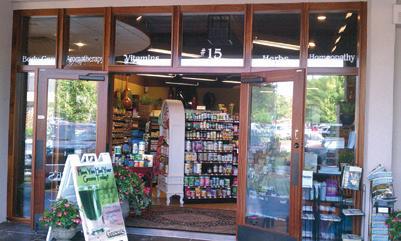
Improve your level of stress, depression and mood with natural products from a locally owned family business. Our knowledgeable staff will guide you using aromatherapy for pain, anxiety, energy enhancement and more. We carry several brands of essential oils, including doTERRA. See ads, page 2, 17 and back page.
MARYJO BRIGGS ART
MaryJo Briggs PaintwMJ@gmail.com MaryJoBriggsArt.com

Discover why trauma and long-standing challenges are hard to resolve. Join a women’s only virtual (and sometimes in-person) circle where art and intention setting are used to overcome a wide variety of seemingly impossible circumstances. Biweekly online group second and fourth Wednesday of the month. Call or text 803-537-1234 to enroll free for a limited time.
DOWDY RUDOLPH CHIROPRACTIC LLC
Dr. Dowdy Rudolph, DC 1444 Barnwell St, Columbia 803-376-6293 • DowdyRudolphChiro.com

Dr. Gerald Rudolph, DC, focuses on finding the root cause of your problems and not just treating your pain. He utilizes digital X-rays to help diagnose problems, spinal adjustments to stimulate proper movement of spinal and extremity joints, active therapeutic movement exercises to correct movement disorders, and spinal decompression to help relieve numbness and tingling down your arms and legs. Dowdy Rudolph Chiropractic also offers a state-of-the-art fullbody lounge hydromassage table that can help you feel more rejuvenated and relaxed. See ad, page 10.
SPRING RAIN HYDROTHERAPY
Linda Salyer
120 Kaminer Way Pkwy, Ste H, Columbia 803-361-2620 • LSalyer@ ymail.com

All disease begins in the colon. Constipation; slow, sluggish bowel; gas and bloating? A colonic will help to rid you of these problems. Colonics promote good digestion, help speed metabolism, help lower cholesterol, and help relieve joint pain. Linda Salyer is IACN certified and a retired nurse. Saturday appointments available with an additional small convenience fee. See ad, page 23
FOOT SAVI
7001 St Andrews Rd, Ste A Certified Board Pedorthist and Brace Specialist 803-781-1230 • FootSavi.com

With more than 30-plus years in the footcare/footwear industry, Sion Owen helps with a variety of issues, including gait analysis, foot assessments, custom orthotics, bracing and compression therapy, plantar fascia pain, neuropathy and fitting for therapeutic shoes for patients with diabetes, arthritis, painful bunions, callouses and hammer toes. Call to schedule an appointment! See ad, page 23.
ABOUT YOUR HEALTH INC
120 Kaminer Way Pkwy, Ste J, Columbia 803-798-8687 • AboutYourHealthSC.com

About Your Health Inc’s main focus is health education and health-enhancing services, including One-on-One Nutritional Counseling, Live/Dry Blood Cell Observation, Mild Hyperbaric Chamber, Ozone Therapies, Thermography, Aqua-chi Footbath, Far Infrared Sauna and more. They also carry hard-to-find natural, organic, wholefood nutritional supplements and products. See ad, page 9
Tracy R. Jacox • 833-678-7229
OriginalOriginshw@gmail.com
OriginalOriginshw.com
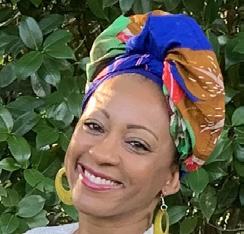
Ms. Tracy has over 30 years of experience in the medical field. The mission of Original Origins Health and Wellness is to educate, equip and empower the community to adopt a predominately whole food, plantbased lifestyle, which will improve and optimize your quality of life, health and wellness while preventing, delaying, reversing or eliminating chronic illnesses. Original Origins can assist you with maximizing your health and wellness holistically! Our wide range of services include health coach partnering, comprehensive health evaluations, comprehensive cooking experiences, and a comprehensive kitchen evaluation. Your health is your wealth! See ad, page 31
Grace Mosgeller
303-903-4936 (text only please) GraceMosgeller.com/9DBreathwork

Release years of mental and emotional blocks in a fraction of the time. The revolutionary 9D Breathwork & Sound Healing Technology has helped tens of thousands of people, just like you, repattern limiting beliefs, root out deep traumas and release pent-up emotions in a single session. What’s the end result? Freedom to be happy, satisfied, fulfilled and empowered to live life abundantly at your fullest potential. Find out more and download a 5-Minute Sample at GraceMosgeller.com/9DBreathwork. See ad, page 14
1911 Barnwell St, Ste C, Columbia 803-708-8612 • nbhwsc.com

We are a very unique health and wellness center designed to help you discover a more natural and healthier way of living. Are you in need of a total detox? Do you want to rid your body of toxins or need to lose inches and burn 300 calories in 30 minutes? If you answered “yes” to these questions, then come embark on a healthy journey with us! Our extensive list of professional services includes foot detoxing, infrared sauna body wrapping, vaginal/yoni steaming, and vaginal rejuvenation. Owner and operator Sherino L. Maple is now offering complimentary consultations. Call today to book a consultation.
EXPECT WELLNESS
Dr. Rachel Hall

130 Suber Rd, Columbia 803-796-1702 • DrRachelHall.com ExpectWellness@sc.rr.com Find us on Facebook for great health tips. Integrative/Holistic medicine consults for anyone wanting to approach their health more naturally. Dr. Rachel Hall is board certified in both family medicine and integrative holistic medicine. Together we will focus on finding the root of the problem, not just treating symptoms. Call today for a consult if you are looking to achieve balance. In-house diagnostic labs and therapies. See ad, page 3
JOY LEE CONNOR
Healing Minster at Springhill AtONEment Center 803-447-6499
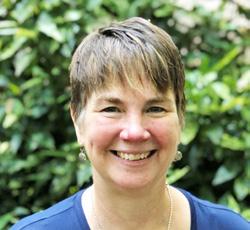
Joy has more than 30 years of experience in energy and bodywork. She teaches Reiki, Touch for Health, Meditation, Yoga, Ayurveda and A Course in Miracles. Joy welcomes and sees clients who are ready to shed guilt and limitations in favor of forgiveness and freedom. One hundred acres of trees surround this pristine location for healing at Springhill AtONEment Center. Nature walks and fireside gatherings available. Contact Joy at 803-447-6499.
ABOUT YOUR HEALTH INC
120 Kaminer Way Pkwy, Ste J, Columbia 803-798-8687 • AboutYourHealthSC.com

Our main focus is health education and health-enhancing services. One-on-one nutritional counseling, Mild Hyperbaric Oxygen Therapy, Reams pH testing, parasite programs, aqua-chi footbaths, far infrared sauna, weight-loss programs, and thermography. Hard-to-find natural, organic, whole food nutritional supplements, raw foods and natural household items. See ad, page 9.
GARNER’S NATURAL LIFE
4840 Forest Dr, Ste 15a, Columbia 803-454-7700 GarnersNaturalLife.com

At Garner’s Natural Life, we offer the purest, most innovative high-quality natural products. With more than 130 collective years of wellness experience! Allows us to encourage your healthy choices. See ads, page 2, 17 and back page.
Connect with us naturally!













